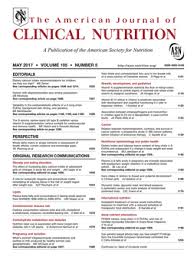Background: Although the use of micronutrient powders (MNPs) is considered the preferred approach for childhood anemia control, concerns about iron-related morbidity from clinical trials have challenged programmatic scale-up.
Objective: We aimed to measure the effects of community-based sales of MNPs on diarrhea-, fever-, cough-, and malaria-morbidity episodes in children 6–35 mo of age. Design: We conducted a cluster-randomized trial in rural Western Kenya where 60 villages were randomly assigned to either intervention or control groups. MNPs (containing iron, vitamin A, zinc, and 11 other micronutrients) and other health products (e.g., insecticidetreated bednets, soap, and water disinfectant) were marketed in 30 intervention villages from June 2007 to March 2008. Household visits every 2 wk were used to monitor self-reported MNP use and morbidity (illness episodes in the previous 24 h and hospitalizations in the previous 2 wk) in both groups. Iron, vitamin A, anemia, malaria, and anthropometric measures were assessed at baseline and at 12 mo of follow-up. Data were analyzed by intent-totreat analyses.
Results: Of 1062 children enrolled in the study, 1038 children (97.7%) were followed (a total of 14,204 surveillance visits). Mean MNP intake in intervention villages was 0.9 sachets/wk. Children in intervention villages, compared with children in control villages, had w60% fewer hospitalizations for diarrhea (0.9% compared with 2.4%, respectively; P = 0.03) and 70% fewer hospitalizations for fever (1.8% compared with 5.3%, respectively; P = 0.003) but no significant differences in hospitalizations for respiratory illness (1.1% compared with 2.2%, respectively; P = 0.11) or malaria (3.1% compared with 2.9%, respectively; P = 0.82). There were no differences between groups in the numbers of episodes of diarrhea, cough, or fever. Conclusions: MNP use in Western Kenya through market-based community sales was not associated with increased infectious morbidity in young children and was associated with decreased hospitalizations for diarrhea and fever. An integrated distribution of MNPs with other health interventions should be explored further in settings with a high child malnutrition and infection burden.
Effects of community-based sales of micronutrient powders on morbidity episodes in preschool children in Western Kenya.
Citation: Suchdev, P.S.; Addo, O.Y.; Martorell, R.; Grant, F.K.; Ruth, L.J.; Patel, M.K.; Juliao, P.C.; Quick, R.; Flores-Ayala, R. 2016. Effects of community-based sales of micronutrient powders on morbidity episodes in preschool children in Western Kenya. American Journal of Clinical Nutrition. (USA). ISSN 1938-3207. 103(3):934-941.
2017-05-18
INCLUSIVE GROWTH, NUTRITION
Eastern Africa
Kenya
journal_article

